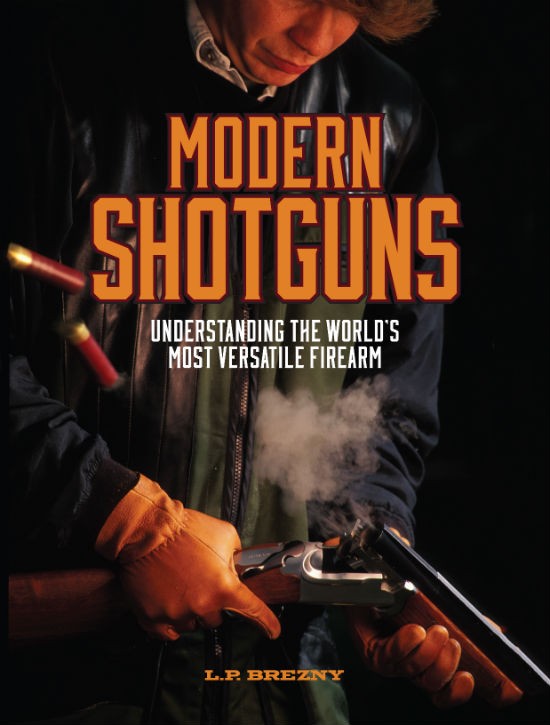

Because the main tool of turkey hunting is a shotgun, some hunters get the false impression that it produces a large pattern of shot, making it easy to hit a target. So, they tend to skip shooting practice. But with fine-tuned barrels and high-tech shotshells designed to take down gobblers beyond 40 yards, that way of thinking is far from reality.
Be Sure Your Gun Will Deliver
The first task is to ensure that your shotgun setup produces the best shot pattern possible. Whether you prefer a 12- or 20-gauge, or a 3½-inch or 2¾-inch shotshell, the golden rule for choosing a turkey shotgun is to select a gun that you’re confident in and comfortable shooting.
A Helpful Sight

Tight patterns delivered by constrictive turkey chokes mean you’re trying to hit a baseball-sized head with a basketball-sized swarm of small pellets at long distances. An upgrade in shotgun sights will improve your success rate. There are many turkey-specific sight systems available. Rifle-style peep sights and electronic red-dot-type sights are popular choices among turkey hunters. A magnified scope with a turkey-specific reticle might be the best option because it lets you fine-tune your shot pattern. Using the scope’s elevation and windage turrets, you can move the gun’s point of impact so the densest part of the pattern is at the point of aim.
Advanced Ammo
Vary your shot sizes and brands from several distances, and stick with the one that gives you the most consistent pattern. That said, it’s next to impossible to get good long-range patterns out of inexpensive lead loads. Products that incorporate advanced technology and high-grade shot produce the best results. For example, Federal Premium Heavyweight turkey loads feature the innovative FliteControl wad, which helps ensure tight patterns downrange. This is coupled with Heavyweight pellets, made of an ultra-dense tungsten alloy that is 15 percent heavier than lead to provide greater downrange velocity and knockdown power.
A Tight Choke
Typically, too much choke constriction causes the pellets to become deformed and inaccurate. Too little choke can throw your pattern too wide, leaving little density in the kill zone. You might find something that delivers better results. In general, more open choke constrictions are better suited for larger pellets, such as No. 4s. The tighter chokes in the .640- to .655-inch range are designed for smaller shot, such as size No. 7. Don’t be afraid to keep experimenting with various choke and shot size combinations.
The National Wild Turkey Federation, among others, suggests the ideal pattern for turkey hunting is 100 pellets in a 10-inch circle at 40 yards. Note that it’s also important for this pattern to be spread out consistently. Large gaps within that 10-inch circle could cause a miss.

Practice in Realistic Scenarios
Ditch the shooting rest and make your practice sessions as realistic as possible. Step away from the shooting bench, and practice while sitting on the ground with a solid backstop behind you, just like you’re sitting up against a tree during a real hunt. You should have at least one practice session wearing your hunting clothes and vest. If you plan on using specialized accessories, such as a monopod or a padded shooting rest that attaches to your knee, you need to practice using those, too.
Practice Your Shot Repetitively
To become proficient at other shotgun sports — such as trap, skeet and sporting clays — athletes take thousands of practice shots before competing. Turkey hunters can benefit from repetition, too. Master the physical acts of flipping the safety, accurately placing your aim, steadying your shot, taking a deep breath and properly squeezing the trigger.
For repetitive shooting practice grab a box of clay targets and less expensive target ammunition. Standard clay targets are roughly the same size as a gobbler’s head, about 4 inches in diameter. For a greater challenge, choose mini-sized clays that are about 2 inches in diameter. The simple way to set up stationary clay targets intended for turkey training is to sharpen the ends of several 2-foot sticks, shove them in the ground and hang the targets from them. Try putting some brush or other obstacles in front of some of the targets to make for more realistic hunting scenarios.
Train and Condition
Turkey hunting is a physical activity that you should train for just like other athletic sports. You should train and condition yourself to be in good physical condition before hunting season, because to make a good shot, you need strength and endurance. During shooting practice at the range, pack your favorite mouth call. Sound off a long, loud calling sequence until you’re huffing and puffing, and then take aim at a distant target and squeeze off a shot. Run a few short sprints in the parking lot, knock off a dozen pushups, or jump rope for a few minutes until your heart is pounding and you’re breathing hard, and then immediately sit down and practice your shot.
Editor's note, this article appeared in the 2014 Turkey and Turkey Hunting‘s Equipment Guide.
Recommended Resources
Gun Digest Guide to Modern Shotguns


![Best Concealed Carry Guns In 2025 [Field Tested] Wilson Combat EDC X9S 1](https://gundigest.com/wp-content/uploads/Wilson-Combat-EDC-X9S-1-324x160.jpg)


![Best 9mm Carbine: Affordable PCCs [Tested] Ruger Carbine Shooting](https://gundigest.com/wp-content/uploads/Ruger-Carbine-Shooting-100x70.jpg)
![Best AR-15: Top Options Available Today [Field Tested] Harrington and Richardson PSA XM177E2 feature](https://gundigest.com/wp-content/uploads/Harrington-and-Richardson-PSA-XM177E2-feature-100x70.jpg)

Nice blog. I totally agree with you that “Practice makes Perfect”. And this is not just about successfully hitting the target but also for a successful and safe turkey hunting. Based on a friend’s experience where he almost hit another hunter, hunters should take some basic precautions to protect themselves and others that might be hunting in your vicinity too.